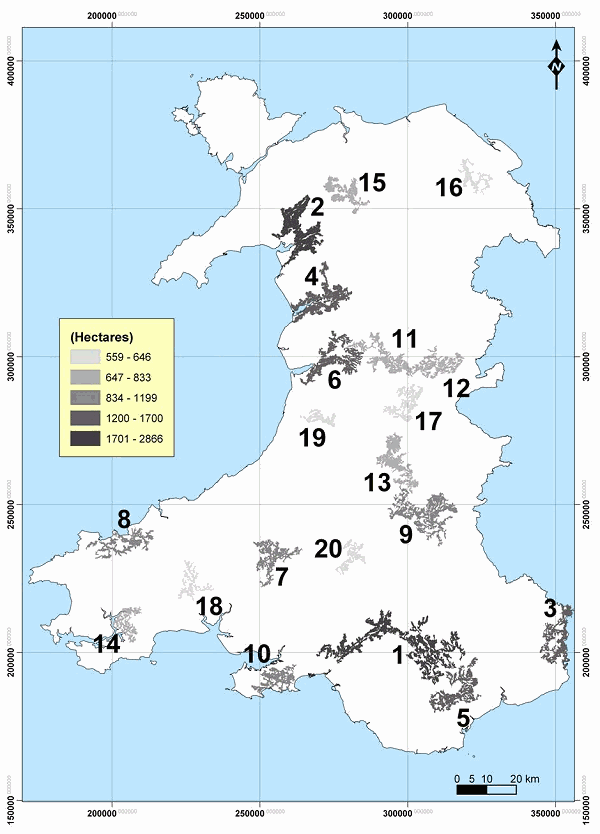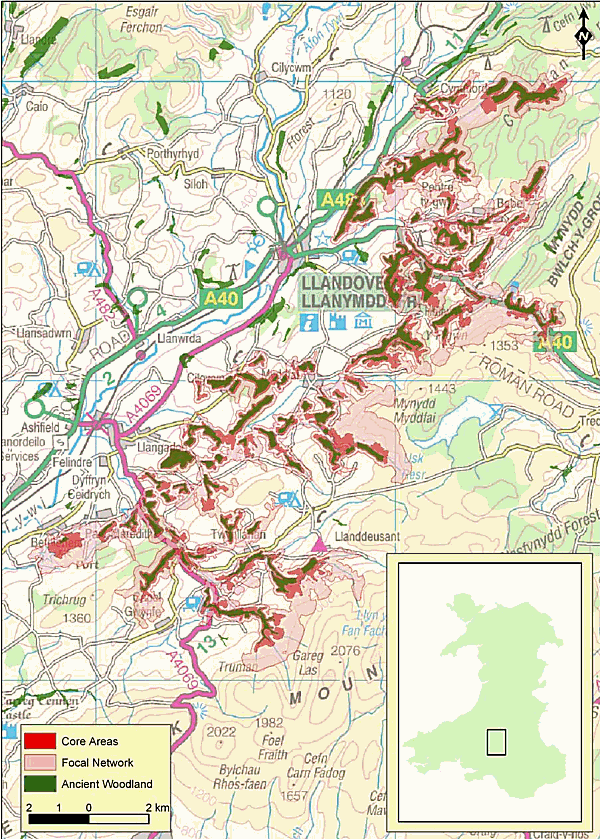Summary


Approach
A species-based approach was used to develop and define woodland habitat networks. A custom habitat network model was developed based on a generic focal species approach. The woodland habitat network model was based on the following structure:
- Input
The basic input is based on a static model of land cover derived from various data sets, and a selection of focal species profiles, which are designed to be representative of a wider number of species groups, priority habitats and key ecological processes. The profiles were based around habitat requirements and dispersal ability. - Process
The process element aims to model functional connectivity. This is determined by the dispersal ability of a focal species and the ease of movement through the surrounding landscape. The surrounding matrix is deemed to have a significant impact on connectivity for many woodland species. Semi-natural and extensive habitats are considered to be more conducive, or permeable, to species movement whereas intensive land uses are predicted to be less permeable, thereby reducing connectivity and increasing ecological isolation. - Output
The result of the analysis was the production of a series of maps that showed the potential extent of habitat networks for ancient and broadleaf woodland, which are considered a high priority for conservation in Wales. The networks are divided into Core Networks (large woodland patches which are closely connected) and Focal Networks (containing smaller habitat patches and a more extensive network). Future management actions are proposed to link back to these network components. The actions reflect the need to expand action from existing Core Networks, into Focal Networks.
Conclusion
The work showed the potential for applying a focal species approach to an area the size of Wales and provided new insights into how the woodlands of Wales could be potentially formed into discrete networks. This can provide useful support to landscape planning as part of the future sustainable development of Wales and aid its successful implementation.
By using more adapted native species, introducing more mixed species stands, and responding to the challenge of maintaining robust habitat networks, woodland ecosystems in Wales will be better able to cope with climate change. See adapting forests and woodlands in Wales to a future climate.
